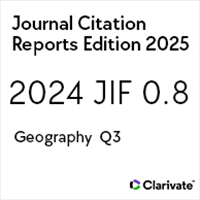The Euro crisis. Causes and Symptoms
La Euro crisis. Causas y síntomas
https://doi.org/10.21670/ref.2015.32.a09
Keywords:
Euro crisis, financial crisis, sovereign debt crisis, unemployment, balance of payment imbalancesAbstract
The Euro crisis is mainly a consequence of the international financial crisis of 2008. Thereby, the term Euro crisis is misleading as there is no currency crisis. First, the article shows some of the birth defects of the Euro. Second, it shows that the increase in public debt was caused by rescue measures for banks and anti-cyclical fiscal policy. Third, we argue that the Euro crisis is not just one crisis (a sovereign debt crisis) but it is a combination of several macroeconomic crises including a growth crisis, a labour market crisis, a public debt crisis, and a current account crisis.Resumen
La crisis del euro es principalmente una consecuencia de la crisis financiera internacional de 2008. Pero el término “crisis del euro” es engañoso ya que no es una crisis de moneda. En primer lugar, el artículo muestra algunos de los defectos originarios en las políticas que dieron nacimiento al euro. En segundo lugar, muestra que el aumento de la deuda pública resulta de las medidas de rescate para los bancos y de la política fiscal anticíclica. En tercer lugar, se sostiene que la crisis del euro no consiste sólo en una crisis (la crisis de la deuda pública), sino que se trata de una combinación de varias crisis macroeconómicas que incluye una crisis de crecimiento, una crisis del mercado de trabajo, una crisis de la deuda pública y una crisis de la balanza de pagos.References
Baldwin, R. and Wyplosz, C. (2004). The Economics of European Integration (2nd ed.). London: McGraw-Hill.
Brada, J. and Signorelli, M. (2012). Comparing Labor Market Performance: Some Stylized Facts and Key Findings. Comparative Economic Studies, 54(2), 231-250.
Buiter, W. (2008). Economic, Political, and Institutional Prerequisites for Monetary Union among the Members of the Gulf Cooperation Council. Open Economies Review, 19(5), 579-612.
Buti, M. and Carnot, N. (2012). The EMU Debt Crisis: Early Lessons and Reforms. JCMS: Journal of Common Market Studies, 50(6), 899-911.
Calmorfs, L. and Driffill, J. (1988). Bargaining Structure, Corporatism, and Macroeconomic Performance. Economic Policy, 3(6), 14-61.
De Grauwe, P. (2012). Economics of Monetary Union. Oxford: Oxford University Press.
Demary, M. and Schuster, T. (2013). Die Neuordnung der Finanzmärkte: Stand der Finanzmarktregulierung fünf Jahre nach der Lehman-Pleite (IW-Analysen No. 90). Germany: Forschungsberichte aus dem Institut der deutschen Wirtschaft Köln.
Fitch Rating. Retrived August, 2012 from https://www.fitchratings.com/web_content/ ratings/sovereign_ratings_history.xls
Frankel, J. and Rose, A. (2002). An Estimate of the Effect of Common Currencies on Trade and Income. Quarterly Journal of Economics, 117(2), 437-466.
International Monetary Fund (IMF). (2012). World Economic Outlook, October 2012: Coping with High Debt and Sluggish Growth. Washington, Distrit of Columbia: Author.
International Monetary Fund (IMF). (2013). European Union: Publication of Financial Sector Assessment Program (IMF Country Report No. 13/67). Washington, Distrit of Columbia: Author.
Kenen, P. (1969). The Theory of Optimum Currency Areas: An Eclectic View. In R. Mundell and A. Swoboda (Eds.), Monetary Problems in the International Economy. Chicago: University of Chicago Press.
Lane, P. (2012). The European Sovereign Debt Crisis. The Journal of Economic Perspectives, 26(3), 49-67.
McKinnon, R. (1963). Optimum Currency Areas. The American Economic Review, 53(4), 717-725.
Möller, J. (2010). The German Labor Market Response in the World Recession– De-Mystifying a Miracle. Zeitschrift für Arbeitsmarktforschung, 42(4), 325-336.
Mundell, R. (1961). A Theory of Optimum Currency Areas. American Economic Review, 51(4), 657-665.
Ng, T. (2002). Should the Southeast Asian Countries Form a Currency Union? The Developing Economies, 40(2), 113-134.
Reinhart, C. and Rogoff, K. (2008). Is the 2007 US Sub-prime Financial Crisis so Different? An International Historical Comparison. American Economic Review, 98(2), 339-44.
Rose, A. and Stanley, T. (2005). A Meta-Analysis of the Effect of Common Currencies on International Trade. Journal of Economic Surveys, 19(3), 347-365.
Schoenmaker, D. and Werkhoven, D. (2012). What is the Appropriate Size of the Banking System? (Paper No. 28). Germany: Duisenberg School of Finance Policy.
Schröder, C. (2010). Produktivität und Lohnstückkosten der Industrie im internationalen Vergleich (International Comparison of Productivity and Unit Labor Costs). IW-Trends, 38(4), 1-19.
Volz, U. (2013). Lessons of the European Crisis for Regional Monetary and Financial Integration in East Asia. Asia Europe Journal, 11(4), 355-376.
Yeyati, E. (2003). On the Impact of a Common Currency on Bilateral Trade. Economics Letters, 79(1), 125-129.































